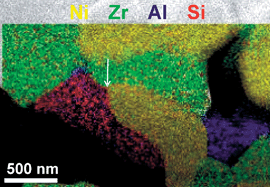Highly efficient high temperature electrolysis†
Abstract
High temperature electrolysis of

- This article is part of the themed collection: Materials chemistry for hydrogen storage and generation
* Corresponding authors
a
Fuel Cells and Solid State Department, Risø – DTU, Technical University of Denmark, Frederiksborgvej 399, Roskilde, Denmark
E-mail:
anne.hauch@risoe.dk
Fax: +4546775858
Tel: +4546775850
High temperature electrolysis of

 Please wait while we load your content...
Something went wrong. Try again?
Please wait while we load your content...
Something went wrong. Try again?
A. Hauch, S. D. Ebbesen, S. H. Jensen and M. Mogensen, J. Mater. Chem., 2008, 18, 2331 DOI: 10.1039/B718822F
To request permission to reproduce material from this article, please go to the Copyright Clearance Center request page.
If you are an author contributing to an RSC publication, you do not need to request permission provided correct acknowledgement is given.
If you are the author of this article, you do not need to request permission to reproduce figures and diagrams provided correct acknowledgement is given. If you want to reproduce the whole article in a third-party publication (excluding your thesis/dissertation for which permission is not required) please go to the Copyright Clearance Center request page.
Read more about how to correctly acknowledge RSC content.
 Fetching data from CrossRef.
Fetching data from CrossRef.
This may take some time to load.
Loading related content
